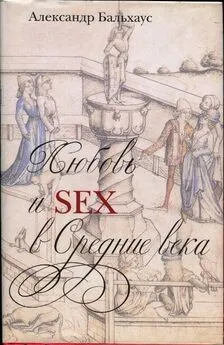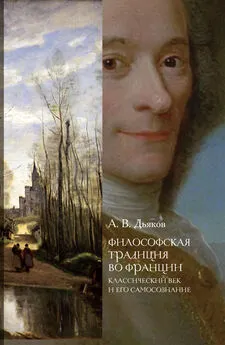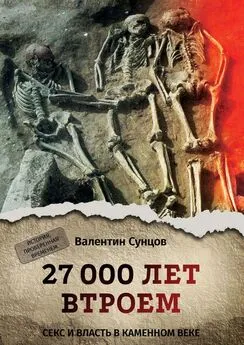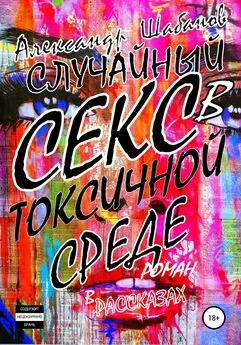Александр Ли - Безобразный Ренессанс. Секс, жестокость, разврат в век красоты
- Название:Безобразный Ренессанс. Секс, жестокость, разврат в век красоты
- Автор:
- Жанр:
- Издательство:Литагент Кучково поле
- Год:2018
- Город:Москва
- ISBN:978-5-9950-0814-9
- Рейтинг:
- Избранное:Добавить в избранное
-
Отзывы:
-
Ваша оценка:
Александр Ли - Безобразный Ренессанс. Секс, жестокость, разврат в век красоты краткое содержание
Безобразный Ренессанс. Секс, жестокость, разврат в век красоты - читать онлайн бесплатно ознакомительный отрывок
Интервал:
Закладка:
Brackett J. K., «The Florentine Onesta and the Control of Prostitution», Sixteenth Century Journal 24/2 (1993); 273–300.
Brown A., The Renaissance, 2nd ed. (London and New York, 1999).
Brown A., «The Early Years of Piero di Lorenzo, 1472–1492: Between Florentine Citizen and Medici Prince», In J. E. Law and B. Paton, eds., Communes and Despots In Medieval and Renaissance Italy (Farnham, 2011), 209–222.
Brown J. С, «А Womans Place was In the Home: Womens Work In Renaissance Tuscany», In M. W. Ferguson, M. Quilligan, and N. J. Vickers, eds., Rewriting the Renaissance. The Discourses of Sexual Difference In Early Modern Europe (Chicago and London, 1986), 206-24.
Brown J. C. and R. C. Davis, eds., Gender and Society In Renaissance Italy (Harlow, 1998).
Brown J. C., and J. Goodman, «Women and Industry In Florence», Journal of Economic History 40/1 (1980): 73–80.
Brucker G. A., Florentine Politics and Society, 1343–1378 (Princeton, 1963).
Brucker G. A., Renaissance Florence (Berkeley, Los Angeles and London, 1969).
Brucker G. A., «Florentine Voices from the Catasto, 1427–1480», I Tatti Studies 5 (1993): 11–32.
BruckerG. A., «The Medici In the Fourteenth Century», Speculum 32/1 (1957): 1-26.
Brundage J. A., Law, Sex, and Christian Society In Medieval Europe (Chicago, 1987).
Bullard M. M., «Heroes and their Workshops: Medici Patronage and the Problem of Shared Agency», Journal of Medieval and Renaissance Studies 24 (1994): 179-98.
Burckhardt J., The Civilization of the Renaissance In Italy , trans. S. G. C. Middlemore (London, 1995).
Burke P., The European Renaissance: Centres and Peripheries (Oxford, 1998).
Burnett C. and A. Contadini, eds., Islam and the Italian Renaissance (London, 1999).
Butters H. C, Governors and Governmnet In Early Sixteenth-Century Florence, 1502–1519 (Oxford, 1985).
Byatt M. C., «The Concept of Hospitality In a Cardinals Household In Renaissance Rome», Renaissance Studies 2 (1988): 312-20.
CaferroW., «Continuity, Long Service, and Permanent Forces: A Reassessment of the Florentine Army In the Fourteenth Century», Journal of Modern History 80/2 (2008): 219-51.
Caferro W., John Hawkwood: An English Mercenary In Fourteenth-Century Italy (Baltimore, 2006).
Callmann E., Apollonio di Giovanni (Oxford, 1974).
Campbell C., Love and Marriage In Renaissance Florence: The Courtauld Wedding Chests (London, 2009).
Camporeale S. I., Lorenzo Valla: Umanesimo e Teologia (Florence, 1971).
Carleton Munro D., «The Western Attitude Towards Islam during the Period of the Crusades», Speculum 6/3 (1931): 329-43.
Carmichael A. G., Plague and the Poor In Renaissance Florence (Cambridge, 1986).
Cassuto U., Gli Ebrei a Firenze nelleta del Rinascimento (Florence, 1918).
Cavallo S., «The Artisans Casa», In M. Ajmar-Wollheim and F. Dennis, eds., At Home In Renaissance Italy (London, 2006), 66–75.
Cerulli, «Eugenio IV e gli Etiopi al Concilio di Firenze nel 1441», Rendiconti della R. Accademia dei Lined, Classe di Scienze Morali 6/9 (1933): 346–368.
Cerulli, «LEtiopia del sec. XV In nuovi documenti storici», Africa Italiana 5 (1933): 58–80.
Cesareo G. A., Pasquino e Pasquinate nella Roma di Leone X (Rome, 1938).
Chambers D. S., «The Economic Predicament of Renaissance Cardinals», Studies In Medieval and Renaissance History 3 (1966): 289–313.
Clementi R, I/ carnevale romano nelle cronache contemporanee dale origini al secolo XVII (Citta di Castello, 1939).
Clough С. H., «Federigo da Montefeltros Patronage of the Arts, 1468–1485», Journal of the Warburg and Courtauld Institutes 36 (1973): 129–144.
Cohen E. S., and T. V. Cohen, Daily Life In Renaissance Italy (Westport CT and London, 2001).
Cohn Jr., S. K., «The Black Death: End of a Paradigm», American Historical Review 107/3 (2002): 703-38.
Cohn Jr., S. K., The Laboring Classes In Renaissance Florence (New York, 1980).
Cohn Jr., S. K., «Women and Work In Renaissance Italy», In Brown and Davis, eds., Gender and Society , 107–127.
Cole B., The Renaissance Artist at Work from Pisano to Titian (London, 1983).
Comanducci R. M., «Laltare nostro de la Trinita»: Masaccios Trinity and the Berti Family», Burlington Magazine 145 (2003): 14–21.
Connell W. J., and G. Constable, «Sacrilege and Redemption In Renaissance Florence: The Case of Antonio Rinaldeschi», Journal of the Warburg and Courtauld Institutes 61 (1998): 63–92.
Cooper R., «Pier Soderini: Aspiring Prince to Civic Leader», Studies In Medieval and Renaissance History , n. s. 1 (1978): 67-126.
Corlorni V., Judaica Minora. Saggi sulla storia delTEbraismo Italiano dalYantichita alletd moderna (Milan, 1983).
Creighton G., and M. Merisi da Caravaggio, Caravaggio and his Two Cardinals (Philadelphia, 1995).
Crompton L., Homosexuality and Civilization (Cambridge MA, 2006).
Cunningham C. «For the honour and beauty of the city: the design of town halls», In Norman, ed., Siena, Florence and Padua, 2:29–54.
Daly Davis M., «Opus Isodomum» at the Palazzo della Cancelleria: Vitruvian Studies and Archaeological and Antiquarian Interests at the Court of Raffael Riario», In S. Danesi Squarzina, ed., Roma centro Ideale della cultura dellantico nei secoli XV e XVI (Milan, 1989), 442-57.
Daniel N., Islam and the West: the Making of an Image (Edinburgh, 1960).
Davidsohn R., Storia di Firenze , 8 vols. (Florence, 1956-68).
Davis R. C, Christian Slaves, Muslim Martyrs: White Slavery In the Mediterranean, the Barbary Coast, and Italy, 1500–1800 (New York, 2003).
D’Elia A. E, «Marriage, Sexual Pleasure, and Learned Brides In the Wedding Orations of Fifteenth-Century Italy», Renaissance Quarterly 55/2 (2002): 379–433.
de la Sizeranne R., Federico di Montefeltro capitano, principe, mecenate, 1422–1482 , ed. C. Zeppieri (Urbino, 1972).
de Roover R., devolution de la lettre de change (XlVe-XVIIIe siecles) (Paris, 1953).
de Roover R., The Rise and Decline of the Medici Bank, 1397–1494 (New York, 1966).
de Roover R., «The Scholastics, Usury, and Foreign Exchange»’ Business History Review 41/3 (1967): 257–271.
de Witte C. – M., «Henri de Congo, eveque titulaire d’Utique (+ c.1531), d’apres les documents romains», Euntes Docete 21 (1968): 587-99.
Dean T., Crime and Justice In Late Medieval Italy (Cambridge, 2007).
Dickie J., Delizia! The Epic History of the Italians and their Food (New York, 2008).
Earle T. E, and K. J. P. Lowe, eds., Black Africans In Renaissance Europe (Cambridge, 2005).
Edgerton S. Y., «Florentine Interest In Ptolemaic Cartography as Background for Renaissance Painting, Architecture, and the Discovery of America», Journal of the Society of Architectural Historians 33/4 (1974): 275–292.
Edgerton S. Y., The Renaissance Rediscovery of Linear Perspective (New York, 1975).
Egmont L., Sixtus IV and Men of Letters (Rome, 1978).
Elam C. «Cosimo de Medici and San Lorenzo», In Ames-Lewis, ed., Cosimo “il Vecchio” de Medici, 157-80.
Enaud E, «Les fresques du Palais des Papes d’Avignon», Les Monuments Historiques de la France 17/2-3 (1971): 1-139.
Epstein S. A., Genoa and the Genoese, 958-1528 (Chapel Hill and London, 1996).
Fabiahski M., «Federigo da Montefeltro’s £CStudiolo” In Gubbio Reconsidered. Its Decoration and Its Iconographic Program: An Interpretation», Artibus et Historiae 11/21 (1990): 199–214. Ferguson, W. K., «Humanist views of the Renaissance», American Historical Review 4 (1939): 1-28.
Fermor S., Piero di Cosimo. Fiction, Invention and Fantasia (London, 1993).
Fernandez-Armesto E, Before Columbus. Exploration and Colonisation from the Mediterranean to the Atlantic, 1229–1492 (London, 1987).
FilesiT., «Enrico, figlio del re del Congo, primo vescovo dell’Africa nero (1518)», Euntes Docete 19 (1966): 365-85.
Finlay R., «The Foundation of the Ghetto: Venice, the Jews, and the War of the League of Cambrai», Proceedings of the American Philosophical Society 126/2 (1982): 140-54.
Fiume G., and M. Modica, eds., San Benedetto II того: santita, agiografia e primi processi di canonizzazione (Palermo, 1998).
Fletcher S., and C. Shaw, eds., The World of Savonarola: Italian elites and perceptions of crisis (Aldershot, 2000).
Fragnito G., «Cardinals’ Courts In Sixteenth-Century Rome», Journal of Modern History 65/1 (1993): 26–56.
Franceschi E, «The Economy: Work and Wealth» In Najemy, ed., Italy In the Age of the Renaissance, 124-44.
Francese }., «On Homoerotic Tension In Michelangelos Poetry», MINI 17/1 (2002): 17–47.
Fraser Jenkins A. D., «Cosimo de Medici’s Patronage of Architecture and the Theory of Magnificence», Journal of the Warburg and Courtauld Institutes 33 (1970): 162-70.
Freely J., Jem Sultan: The Adventures of a Captive Turkish Prince In Renaissance Europe (London, 2004).
Frommel C. L., Michelangelo und Tommaso dei Cavalieri (Amsterdam, 1979).
Fuson R. H., Legendary Islands of the Ocean Sea (Sarasota, 1995).
Garfagnini G. C, ed., Savonarola e lapolitica (Florence, 1997).
Garin E., Giovanni Pico della Mirandola: Vita e dottrina (Florence, 1937).
Gilbert С. E., «Fra Angelico’s Fresco Cycles In Rome: Their Number and Dates», Zeitschriftfiir Kunstgeschichte 38/3-4 (1975): 245–265.
Gilbert С. E., Poets Seeing Artists’ Work: Instances In the Italian Renaissance (Florence, 1991).
Giles K. A., «The Strozzi Chapel In Santa Maria Novella: Florentine Painting and Patronage, 1340–1355», Unpublished PhD Dissertation, New York University, 1977.
Gill J., The Council of Florence (Cambridge, 1959).
Gilson S., Dante and Renaissance Florence (Cambridge, 2005).
Goldthwaite R. A., «The Florentine Palace as Domestic Architecture», American Historical Review 77/4 (1972): 977-1012.
Goldthwaite R. A., Private Wealth In Renaissance Florence: A Study of Four Families (Princeton, 1968).
Goldthwaite R. A., The Economy of Renaissance Florence (Baltimore, 2009).
Gombrich E. H., «From the revival of letters to the reform of the arts», In D. Fraser, H. Hibbard, and M. J. Lewine, eds., Essays In the History of Art Presented to Rudolf Wittkower (London, 1967), 71–82.
Gombrich E. H., «leones Symbolicae: The Visual Image In Neo-Platonic Thought», Journal of the Warburg and Courtauld Institutes 11 (1948): 163–192.
Gombrich E. H., «The Early Medici as Patrons of Art», In E. F. Jacobs, ed., Italian Renaissance Studies (London, 1960), 279–311.
Gombrich E. H., The Story of Art, 15th ed. (London, 1989).
Gow A., and G. Griffiths, «Pope Eugenius IV and Jewish Money-Lending In Florence: The Case of Salomone di Bonaventura during the Chancellorship of Leonardo Bruni», Renaissance Quarterly 47/2 (1994): 282–329.
Читать дальшеИнтервал:
Закладка:

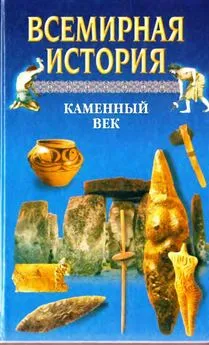
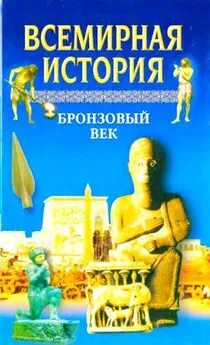


![Александр Бадак - Всемирная история в 24 томах. Т.1. Каменный век [гнусная калибрятина]](/books/1070832/aleksandr-badak-vsemirnaya-istoriya-v-24-tomah-t-1.webp)
